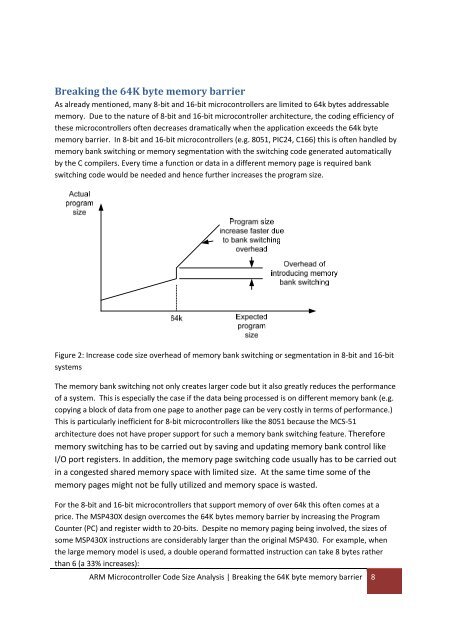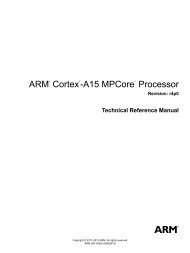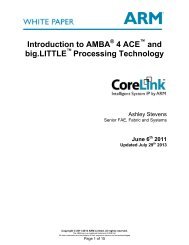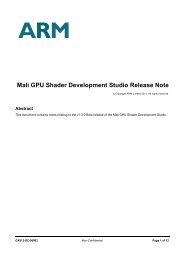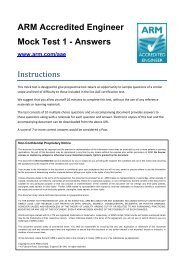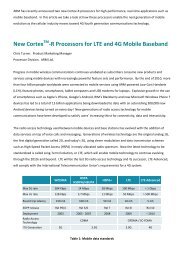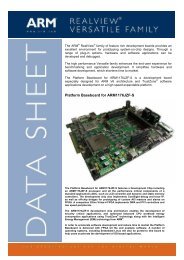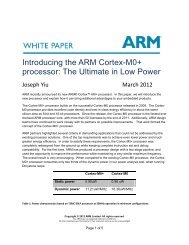32‐Bit Microcontroller Code Size Analysis - Arm
32‐Bit Microcontroller Code Size Analysis - Arm
32‐Bit Microcontroller Code Size Analysis - Arm
You also want an ePaper? Increase the reach of your titles
YUMPU automatically turns print PDFs into web optimized ePapers that Google loves.
Breaking the 64K byte memory barrier<br />
As already mentioned, many 8‐bit and 16‐bit microcontrollers are limited to 64k bytes addressable<br />
memory. Due to the nature of 8‐bit and 16‐bit microcontroller architecture, the coding efficiency of<br />
these microcontrollers often decreases dramatically when the application exceeds the 64k byte<br />
memory barrier. In 8‐bit and 16‐bit microcontrollers (e.g. 8051, PIC24, C166) this is often handled by<br />
memory bank switching or memory segmentation with the switching code generated automatically<br />
by the C compilers. Every time a function or data in a different memory page is required bank<br />
switching code would be needed and hence further increases the program size.<br />
Figure 2: Increase code size overhead of memory bank switching or segmentation in 8‐bit and 16‐bit<br />
systems<br />
The memory bank switching not only creates larger code but it also greatly reduces the performance<br />
of a system. This is especially the case if the data being processed is on different memory bank (e.g.<br />
copying a block of data from one page to another page can be very costly in terms of performance.)<br />
This is particularly inefficient for 8‐bit microcontrollers like the 8051 because the MCS‐51<br />
architecture does not have proper support for such a memory bank switching feature. Therefore<br />
memory switching has to be carried out by saving and updating memory bank control like<br />
I/O port registers. In addition, the memory page switching code usually has to be carried out<br />
in a congested shared memory space with limited size. At the same time some of the<br />
memory pages might not be fully utilized and memory space is wasted.<br />
For the 8‐bit and 16‐bit microcontrollers that support memory of over 64k this often comes at a<br />
price. The MSP430X design overcomes the 64K bytes memory barrier by increasing the Program<br />
Counter (PC) and register width to 20‐bits. Despite no memory paging being involved, the sizes of<br />
some MSP430X instructions are considerably larger than the original MSP430. For example, when<br />
the large memory model is used, a double operand formatted instruction can take 8 bytes rather<br />
than 6 (a 33% increases):<br />
ARM <strong>Microcontroller</strong> <strong>Code</strong> <strong>Size</strong> <strong>Analysis</strong> | Breaking the 64K byte memory barrier 8


